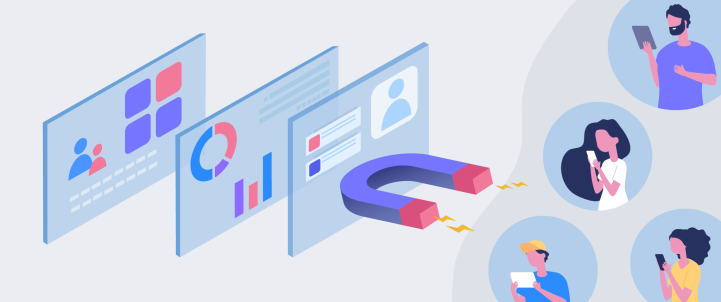Customer retention is a tremendous area of focus for us at CleverTap. We’ve seen first-hand how startup mobile brands who relentlessly keep retention in their sights outlast those who merely focus on user acquisition.
Which begs the question: what sort of marketing technology stack should a mobile brand have to properly achieve its retention goals?
It would be way too easy to simply fire up a search query for “martech stack examples,” and find a ready-made collection of tools that other brands are using. But sadly, things are never this easy — especially for business. The tools you’ll need for your marketing stack will always depend on the strategy and goals you’ve defined for growth.
So let’s get clear on the goals for your marketing tech.
The Right Goals for Your Marketing Stack
In a previous blog post, we tackled how marketing technology, specifically mobile marketing automation, is just a single tool in your brand’s arsenal. It’s not a magic bullet that will solve your customer retention challenges. Rather, it must have a strategy and a process in place that can make full use of it.
There are five main goals for any mobile marketing tech stack to achieve user retention KPIs. Your stack should be able to:
- Assist in user segmentation
- Drive the onboarding process
- Increase engagement across all channels
- Solve for abandoned carts
- Improve the customer experience
If you map those goals out to your marketing stack you can identify any gaps in your toolset.
Molding Martech Into an Engine for Engagement
A great way to aim your marketing stack toward retention is to turn it into an engine for engagement. An excellent model for this is our own Awareness-Interest-Conversion (AIC) framework.
The idea here is that a customer moves from one layer to the next. The user engages with your app on a surface level while in the awareness layer. Then the user moves to the interest layer where they see the value of your app and become more habitual in its usage. Ultimately, the end goal is to get them to the conversion layer, where a purchase (or a share, or a favorite, or a referral — whichever you deem to be the conversion event) is accomplished.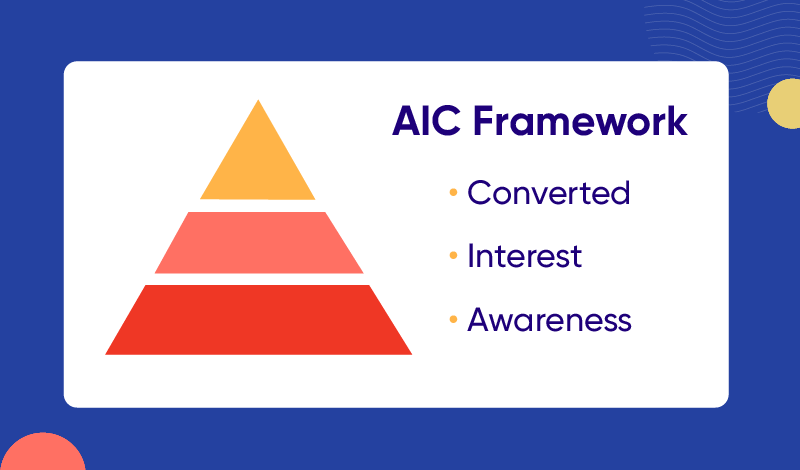
1.Marketing Tech for Acknowledgement & Awareness
In AIC, awareness (or acknowledgement) refers to the initial — and usually brief — interactions between a prospect and a brand. These are the actions that make your users more aware of your brand and your messaging. They include anything from opening an email generated by your app to clicking on a push notification. Users who click or engage are those you want to move to the next stage: habitual, long-lasting interest.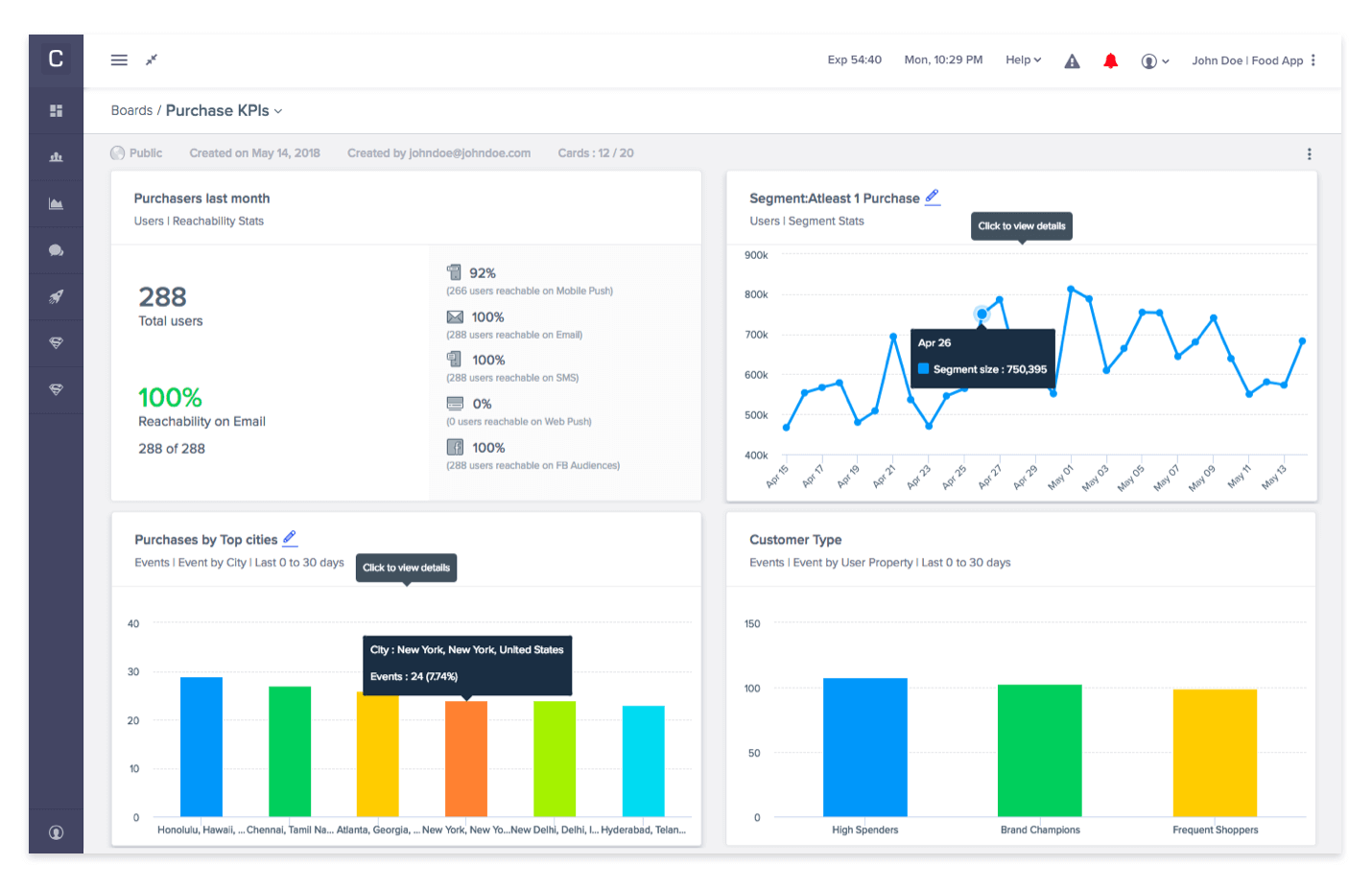
In order to create a stack of tools that generate brand awareness and initial engagement, you need analytics tools to know who your users are, what they do, and how best to communicate with them.
For some guidance on which mobile app metrics your analytics tools should track, read our Definitive Guide to Mobile App Metrics.
Analytics Tools
- Analytics: CleverTap, Adobe Analytics, Apple Analytics, Facebook Analytics, Google Analytics
- Attribution: Tune, Branch, AppsFlyer, Apsalar, Kochava
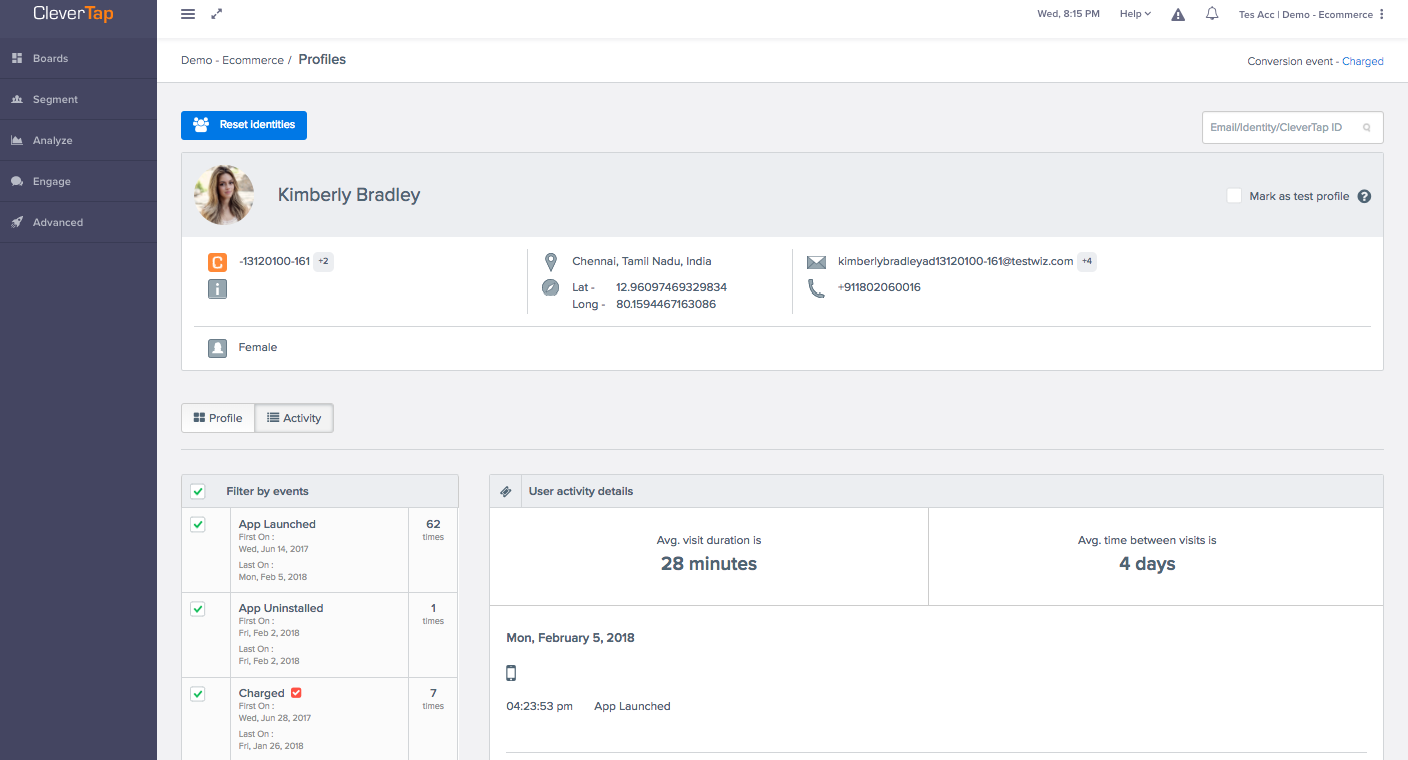
Alongside the analytics, you need a tool that can manage and document your customer relationships — a CRM or customer data platform (CDP) that can build up rich profiles on every user as they engage with your app.
CRM and CDP Tools
- CRM: Salesforce, HubSpot, Apptivo, Freshsales, Insightly
- CDP: CleverTap, mParticle, Segment, Hevo, Tableau. Localytics
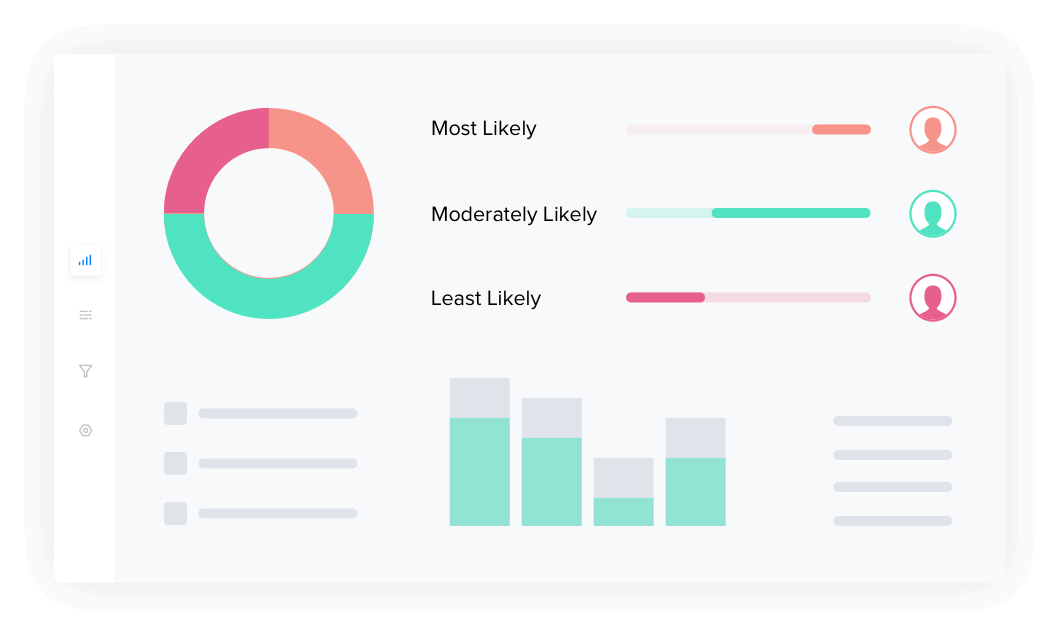
In addition, you need customer segmentation tools that slice your customers down into niche groups based not just on demographics, but also similar behavior and psychographics.
This allows you to better customize your communications, making them more relevant to the user. We’ve found that personalized push notifications can boost engagement by almost 10%.
Bonus points if you can find a tool with automated segmentation for RFM Analysis— one that can uncover similar behaviors from billions of data points and correctly identify your most valuable customer segments.
Segmentation Tools
- CleverTap
- Eloqua
- Optimove
- Matomo
- Segment
2. Martech Stack Examples for Interest
With the AIC framework, you move a user from the acknowledgement layer to the interest layer. At this point, you should be analyzing the behavior of users who are en route to conversion and in the process, measuring and gauging their level of interest in your product.
To move your users into this layer, you need engagement tools that deliver marketing campaigns with surgical precision. These tools should continuously feed the data of who is clicking on what back into your analytics software so you can improve your efforts or even pivot in real time when users aren’t reacting positively to your message.
Engagement tools span the entire breadth of the martech landscape, from email to social, push to in-app notifications, geolocation tools to beacons, plus every marketing automation software available.
Engagement Tools
- Push notifications: CleverTap, Intercom, Swrve, Catapush, Taplytics
- Email: CleverTap, SendGrid, Mailgun, Sendinblue, Mandrill
- Social media: Crowdfire, Agorapulse, SocialPilot, Hootsuite, Buffer
- Ad/promotion: AdRoll, Doorboost, Demandbase, Facebook Ads, TruSignal
- Marketing Automation: Eloqua, Pardot, Mailchimp, Marketo, Hubspot
- Voice/SMS: Twilio, Nexmo, Exotel, Gupshup
- Webhooks: Freshdesk, Zendesk, Zapier, Slack, Mobstac
3. Marketing Technology for Conversion
The final layer in the AIC framework is conversion, the goal of every campaign. The tricky part is defining what your brand considers a conversion event. Is it a download, a purchase, a share, or something else?
Don’t limit yourself to thinking that conversion equals payment. It can vary depending on your industry and type of app. For example, social media apps may consider sharing an update to a news feed as a conversion event. Mobile games, on the other hand, might consider completing a level a conversion.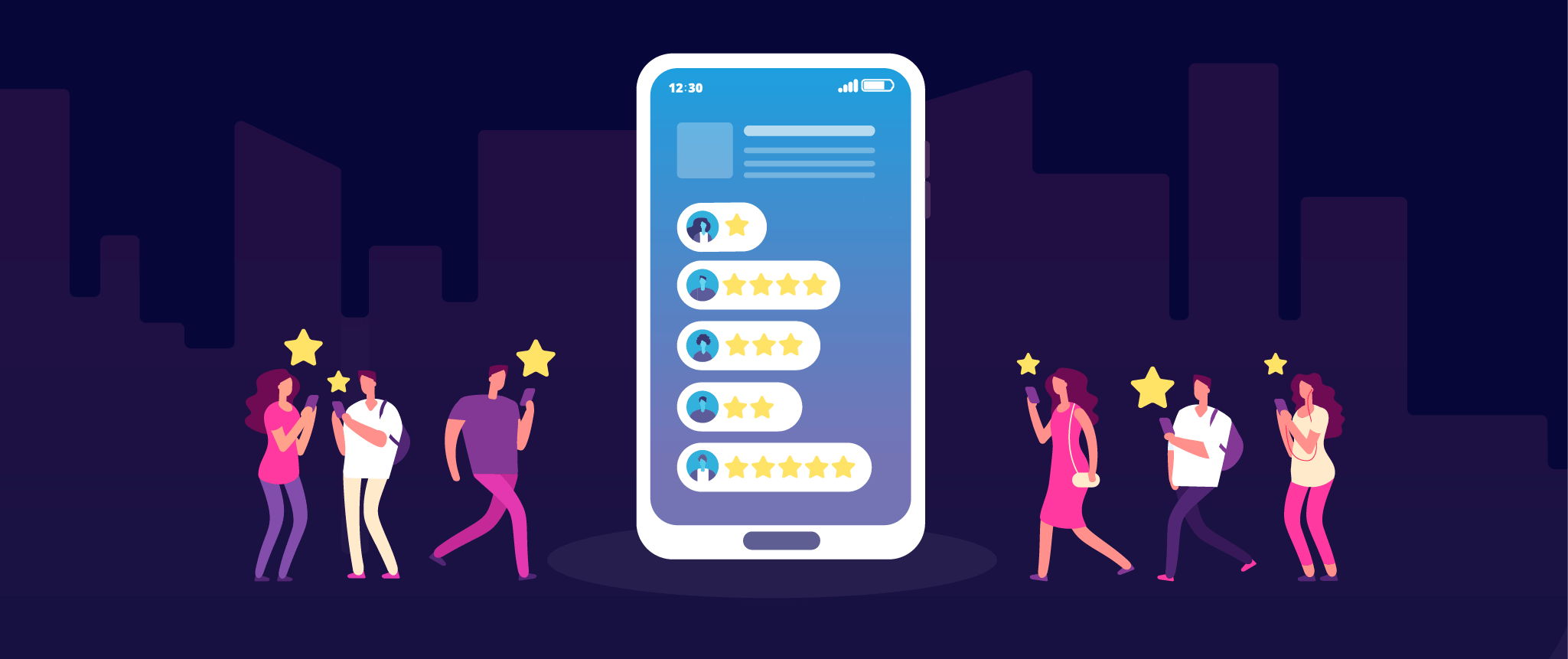
You need tools that allow for continuous measurement and customer experience optimization so that the user is consistently given a customized, relevant experience across every digital touchpoint.
For this to work, these experiences must draw information from every customer’s profile and historical behavior. This results in messaging and offers that match the user’s preferences and intent. Users get the royal treatment from your app, and hopefully, that experience is so delightful that users continue to become loyal customers who increase their CLTV and drive up your revenues.
Conversion Tools
- Personalization: CleverTap, Demandbase
- Engagement: CleverTap, Sailthru,
- Optimization: Siteimprove, Uprank
- Remarketing: Google Ads, Facebook Audience Network
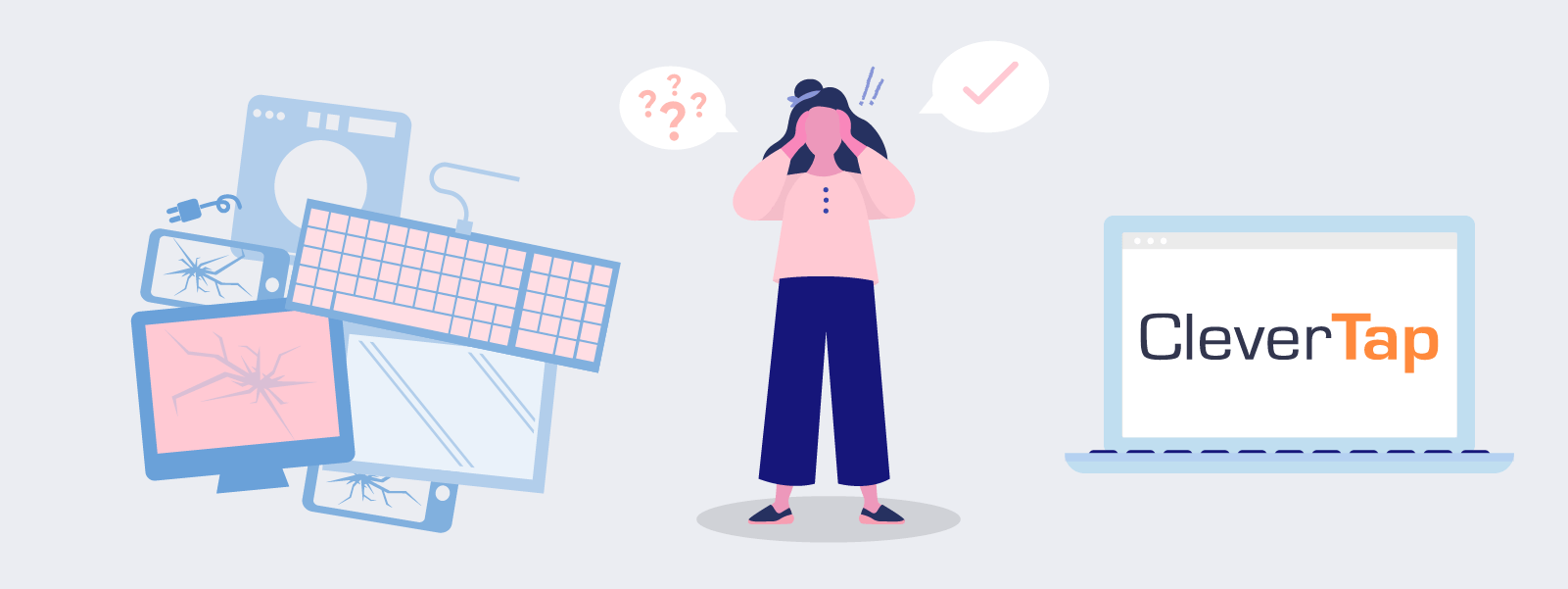
Building a Marketing Stack: 10+ Tools vs. Just One
If you haven’t noticed by now, you’ll see that in almost every list of martech stack examples that we provide above, CleverTap is present. That’s because our mobile marketing platform allows you to do everything crucial to your user retention efforts in one place.
Our platform can auto-segment your users based on their behavior and engagement. You get mobile analytics as well as an engagement suite so you can move from identifying segments to sending them push notifications or emails within the same tool. And you can see in real time whether your efforts are effectively engaging your audience so that you can perfect even live campaigns.
Building a mobile marketing tech stack is a challenge for any organization. But it gets infinitely easier if, instead of assembling a stack composed of 10 to 15 different tools, you find one platform with all the tools you need.
Read More About Marketing Technology
- TesseractDB™: The Future of Martech is Here
- Cost Optimization in Your Martech Stack: Lower Costs Without Losing Efficiencies
- What Makes CleverTap Different?
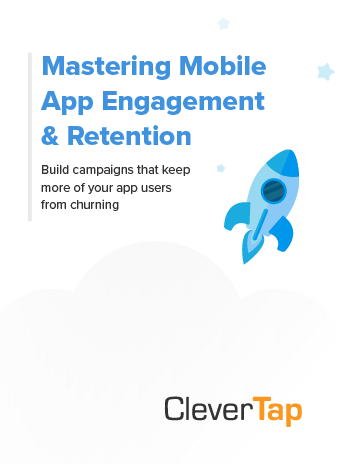
Mastering Mobile App Engagement & Retention
Shivkumar M 
Head Product Launches, Adoption, & Evangelism.Expert in cross channel marketing strategies & platforms.
Free Customer Engagement Guides
Join our newsletter for actionable tips and proven strategies to grow your business and engage your customers.














































